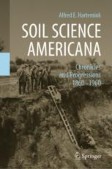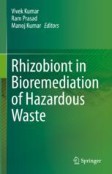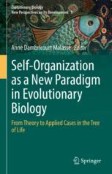Search
Search Results
-
Mycorrhizal Symbiosis: Evolution, Opportunities, Challenges, and Prospects
Since its initial discovery and investigation two centuries ago, mycorrhizal symbiosis has evolved from a concept to a firmly established phenomenon...
-
The continuing relevance of “older” mycorrhiza literature: insights from the work of John Laker Harley (1911–1990)
To new generations of scientists beginning their careers in research, we strongly recommend the practice of reading older literature. To illustrate...

-
Introduction to Restoration Ecology
Restoration ecology is an interdisciplinary field of research that builds on the concepts and foundations of ecology and makes use of other...
-
A Brief Introduction to Restoration Ecology and Ecosystem Restoration
A brief and comprehensive introduction to restoration ecology is given. After a short sketch of the history of this subdiscipline of ecology,...
-
Genomics and adaptation in forest ecosystems
Rapid human-induced environmental changes like climate warming represent a challenge for forest ecosystems. Due to their biological complexity and...

-
The Development of Soil Science in Emilia Romagna
The academic history of soil science in the Emilia Romagna Region dates back to the beginning of XIX century and sees its first master in Filippo Re...
-
Guava Tree (Psidium guajava L.) Associated with Arbuscular Mycorrhizal Fungi: A Systematic Review
The guava is a fruit plant of considerable economic importance, since the consumption of its fruit is widespread in several countries, either fresh...

-
The Danum Hydrology Project : Origins, Aims, Context
The Danum Valley Field Centre adjoins the 438 km2 Danum Valley Conservation Area (DVCA), a well-protected area of nearly totally undisturbed lowland...
-
Soil Properties
Ethiopian soils greatly vary in their morphological, physico-chemical and mineralogical properties due to the wide variations in soil forming...
-
Professor José Miguel Barea (1942–2018): a tribute to an inspiring scientist
The mycorrhiza and, more generally, soil microbiology research communities recently have lost one of their most ardent scientists. José Miguel Barea...

-
Publication 101
Chapter 5 discusses A-to-Z on publications, with special emphasis on journaljournal publications. Throughout the...
-
The Economic Potential of Arbuscular Mycorrhizal Fungi in Agriculture
In the past decade, there has been a tremendous increase in the amount of enterprises producing fungal biotechnology products and services....
-
Pochva Americana II
By the early 1990s, tens of millions of people had immigrated to the USA. Some immigrants became prominent scientists who individually and...
-
Combined and Sustainable Techniques in Remediation of POPs-Contaminated Soil Sites
Modern environmental technologies face massive challenges in dealing with persistent organic pollutants (POPs). The storage and disposal of POPs is...
-
Mesological Plasticity as a New Model to Study Plant Cognition, Interactive Ecosystems, and Self-Organized Evolutionary Processes
The plasticity of living systems acts at several levels of evolutionary biology including self-organization, phenotypic, phylo-, onto-, and...
-
A Systematic Review of South American and European Mycorrhizal Research: Is there a Need for Scientific Symbiosis?
With the application of new molecular analyses to determine soil fungal community composition, and with new macroecological approaches to analyze the...
-
Role of Phytoremediation as a Promising Technology to Combat Environmental Pollution
A wide variety of pollutants such as heavy metals, organic, and inorganic wastes are continuously being added to the environmental components...
-
Use of Biostimulants for Improving Abiotic Stress Tolerance in Brassicaceae Plants
The present climatic change is depleting natural resources and exerting a negative impact on the crop production. Moreover, modern agriculture is...
-
Mycorrhizas in South American Anthropic Environments
For a better understanding of natural, degraded areas and agro-ecosystems, the study of surface and deep soil responses to global change is required....
